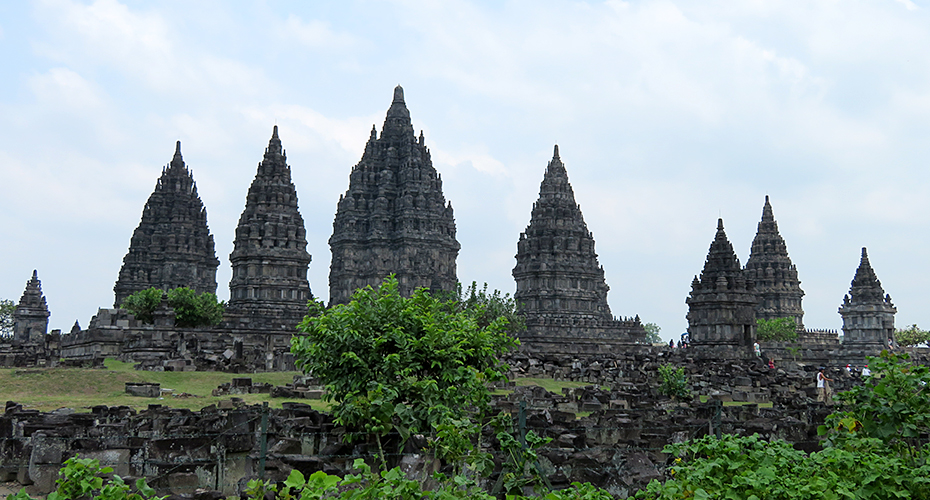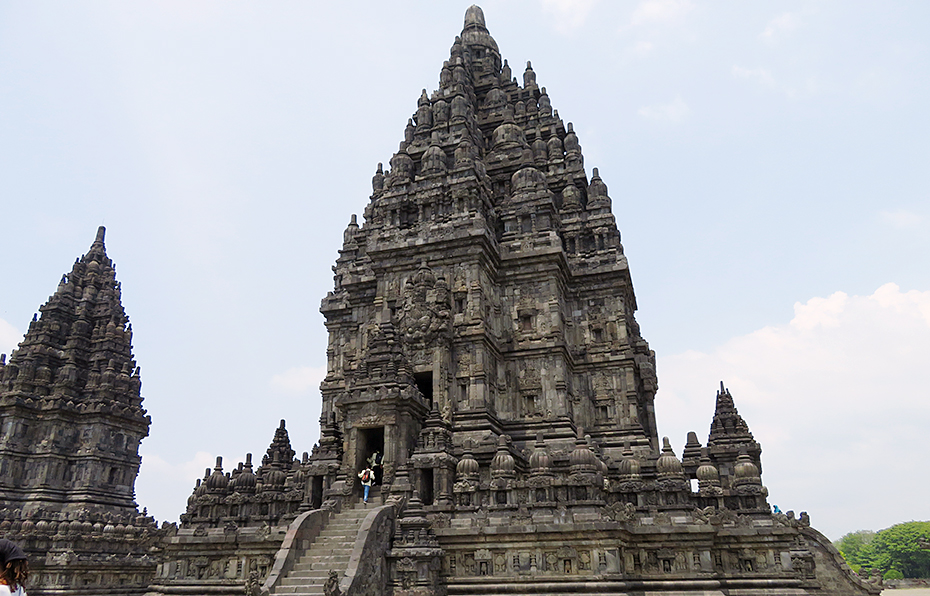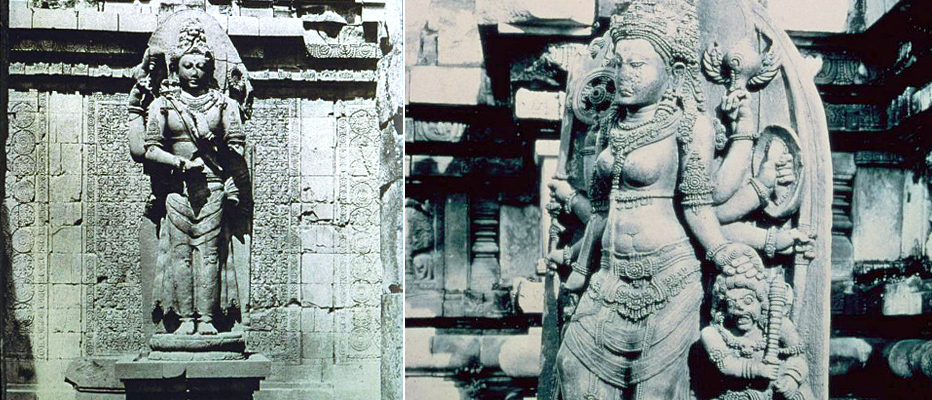In Indonesian history, the period between the 7th and the 13th century A.D. is known as the Classic Period. During this period, Javanese culture developed centered on the royal family, which was based in central Java. Hindu and Buddhist cultures, which had been introduced to Indonesia before the Common Era, developed immensely during the Classic Period, giving it the nickname “Hindu-Buddhist Period.” The backing of and belief in these two religions led to the construction of religiously-inspired monuments and architecture, resulting in the widespread expansion of Javanese cultural influence.
In Indonesia, the term “candi” is used to refer to a religious monument built during the Hindu-Buddhist Period. It is assumed that the term “chaitya,” which refers to a Buddhist altar enshrining Buddhist sarira, was brought from India to Southeast Asia, where it changed to “candi.”
Architectural Characteristics of Hindu Temples in Java
There are two types of Hindu temples in ancient India: rock-cut cave temples and brick temples made out of processed sandstone. Because, like any other religious facility, these temples were regarded as sacred spaces, their construction had to follow certain rules regarding the movement of celestial bodies and natural principles.
Rules on the construction principles of Hindu temples in India can be found in Śilpa Śāstra. The contents of this rulebook seem to have had an influence on the construction of Hindu temples in central Java because the inscription in Jawi (a form of ancient Javanese) includes the units of measurement used in the book. It appears that Hindu temples in central Java were built based on the construction rules and architectural technologies introduced through India.
Due to the geographical characteristics of Indonesia, a volcanic island prone to earthquakes, there are few cave temples. Instead, most candi are made of highly-durable andesite bricks. Owing to the characteristic heaviness and hardness of andesite, the candi of central Java look grand and imposing rather than slender and fluid.
Candi Prambanan: A Prominent Hindu Temple in Indonesia

Caption of picture1_Candi Prambanan
Candi Prambanan (Picture 1) is a well-known Hindu temple in Central Java. The Prambanan Temple Compound consists of three tall temples surrounded by over 240 smaller shrines. The three temples at the center enshrine the Hindu Trimūrti (“triple deity”)—Brahma, Shiva, and Vishnu. The smaller temples, whose entrances face the entrances of the three central temples, are believed to be the shrines of Hamsa, Nandi, and Garuda, which are the vahana (vehicles) of Brahma, Shiva, and Vishnu. Presently, only Nandi, the vahana of Shiva, is still intact.

Caption of picture2_Shiva Temple of Candi Prambanan
Candi Prambanan is also known as a “Shiva temple (Picture 2)” because the temple enshrining Shiva is the largest of the three central temples and there are also shrines to the north, west, and east of the central temple enshrining Durga, Ganesha, and Agastya, all of which are closely related to Shiva. Thanks to an old epigraph that is supposed to be a record of the establishment of Candi Prambanan, we can imagine how profound the belief in Shiva was among the royal family of Central Java when the temple was constructed.

Caption of picture3_Statue of Shiva in the Candi Prambana (Left), Caption of picture4_Statue of Durga in Candi Prambanan (Right)
There are two theories regarding the origin of the statue of Shiva enshrined in the main chamber (Picture 3) of Candi Prambanan: the first theory is that it was created for Rakai Pikatan (r.838-850), the monarch of the Medang Kingdom, which was powerful in the highlands of Central Java during the 7th century. According to another theory, it was built for Balitung (r. 899-911), who ruled over the region during the 9th century.
These theories are based on the conception of devarāja. Devarāja is a unique piece of Hindu culture that was developed specifically in Southeast Asia in Java and Cambodia. In India, there had already existed the religious belief that regarded the king as one of multiple avatars of Vishnu. The devarāja of Southeast Asia were characterized by a form of ancestor worship, in which the late king, identified with the Hindu deity, became an object of spiritual faith.
There is an interesting tale related to the devarāja about the statue of Durga (Picture 4), Shiva’s wife, which is enshrined in Candi Prambanan. In fact, Prambanan was named after the area where the temple was established. The Indonesian people often call Candi Prambanan “Roro Jonggrang,” the name of a princess in a Javanese fable.
The following is a summary of the fable: prince Bandung Bandawasa fell in love with a beautiful princess, Roro Jonggrang, at first sight and asked her to marry him. Roro Jonggrang told him she would agree to the marriage if he built a thousand temples in a night. When the prince tried to build the temples, Roro Jonggrang, who, in fact, did not intend to marry him at all, used her wits and had her maids set fire to the eastern part of the temple. Furious after realizing her scheme, the prince turned her into stone by cursing her and confined her in the temple. Based on this tale, the Indonesian people believe that the statue of Durga in Candi Prambanan is actually the petrified princess, Roro Jonggrang.
Candi Prambanan Transformed into a Cultural Heritage
Currently, 87 percent of the population of Indonesia is Muslim. Thus, the candis built in the Hindu-Buddhist Period have lost their religious function and are now regarded largely as cultural heritages. Candi Prambanan is not only a national cultural asset of Indonesia but was designated as a UNESCO World Heritage, proving its high degree of cultural value. Every March, Nyepi, a Hindu New Year’s event, takes place at the Prambanan compound. Rather than being a religious ritual, it is closer to a promotional event for Indonesian tourism, with emphasis placed on Prambanan’s value as a cultural asset. Meanwhile, the traditional beliefs of Hinduism and a unique Indonesia-localized Hindu culture flourish in Bali.
 KOREA FOUNDATION
KOREA FOUNDATION










